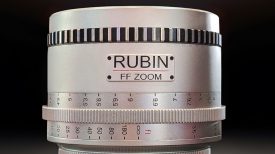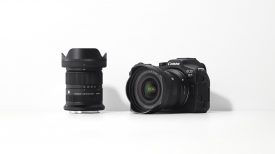Guest post by Michael Sutton:
My last three short films have been based on the idea of reverse storytelling: I go to a location with a topic in mind, shoot footage then go back and explore ideas that can be drawn from it. I believe there is something to tell and share with almost anything you capture. For BEACON – A Visual Poem I went to the ocean to film without a plan or even a solid idea of what I wanted to make. I only knew I wanted to get some stock footage and come out of the experience with some form of emotion. I shot for five days spread out between commercial and photography gigs. After three days of shooting with over 2TB of footage and no plan, I took a look at what I had captured to see if there were elements of a beginning, middle and end.
Watching the footage I decided to write down what I saw and felt and it started to form some poetry in my mind. I had never written a poem before, which explains why it does not rhyme and may be a bit disjointed. The concept: A man moves to the ocean to escape a life of flat boring pastures and a dark past, but he finds he cannot escape it by running away. He sees his demons in everyday things and it is only his faith (symbolized by the lighthouse) that keeps him safe. He is the gull.
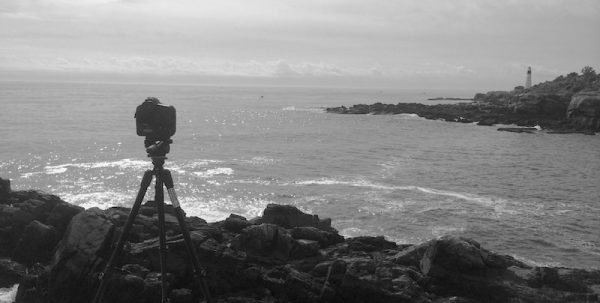
I knew I needed to go back to the Atlantic Ocean to film a few more things. I asked my dear friend Lenny Mordarski to wake up at 2.30am to accompany me on one of my journeys. Originally, he was going to be my assistant, as shooting this film was very difficult as a one man band. I lugged around 75lbs of gear to each location and some of the scenes required walking on seaweed-covered rocks several hundred feet out at low tide. I also had to run with a lot of gear when waves came crashing in at high tide. I had to make about 25-30 trips to and from my car at each location, as I simply could not carry the camera package, lens bag, drone, tripod and sliders by myself. I also could not leave a crazily expensive high-speed camera by itself with crowds of people around and tidal breaks that could have swept away the gear. I ended up putting Lenny in front of the camera and decided he would also serve well as narrator.
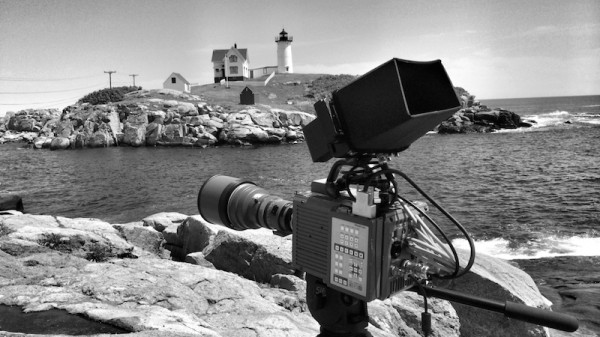
BEACON was primarily shot on the Photron BC2 HD high-speed camera at 250-2000fps. I also used the Canon 1D C 4K DSLR, and a GoPro Hero 3+. For lenses I used my old school 300mm Tamron SP with Adaptall mount (the main lens used on 50 percent of the shots), a manual 50mm Nikon AI and a 16mm Rokinon in Nikon mount. I like the 300mm Tamron as I can change the mount from Nikon to Canon etc in seconds and it is fairly light for a 300mm.
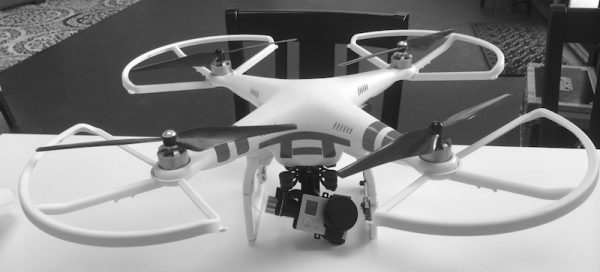
I also used my DJI Phantom 2 with Zenmuse H3-D2 2-axis gimbal for all the aerial shots. I expected it to crash into the sea at any moment, so I transferred footage after each flight in case I didn’t see it again. I was paranoid about using it as it had crashed without warning or reason the day before. I tweeted that morning that I was expecting to lose it in the Atlantic, but instead I managed to use it on multiple passes and on numerous days without issue.
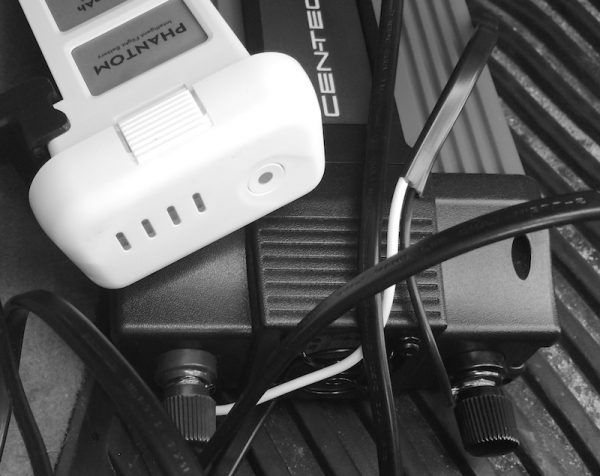
I only had one Phantom battery so I knew I would only get two or three passes over each lighthouse at most. I decided to bring a power inverter with me and charge the battery between locations. This worked nicely as most of the locations were spread 20 to 40 minutes apart. For the GoPro footage I shot 2.7K medium in Protune. This particular camera has been beaten up quite a bit and took a 50 foot drop onto concrete the day before when it came loose on the drone. It had a small scratch on the lens, which caused some extra flare.
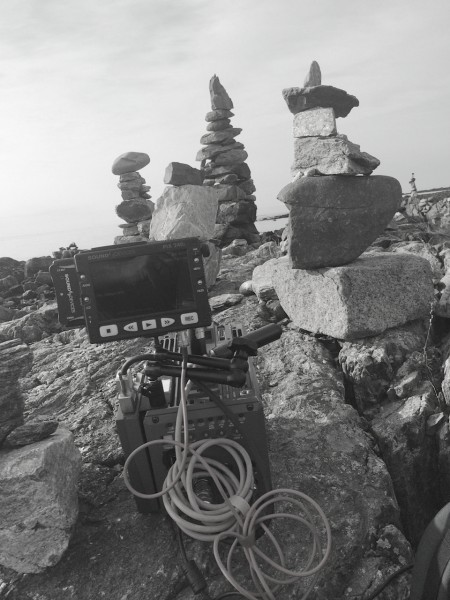
The Photron High-Speed camera is a beast at 16lbs (without lens). Like most high-speed cameras it has the ability to shoot RAW, but for this project I used my trusty Sound Devices Pix 240i (Video division is now called Video Devices) and record ProRes 422 HQ. I use the Pix 240i on almost every job and it’s been invaluable as not only a recorder but also as a monitor with peaking. Normally I black-balance between each shot but there were situations that did not allow for it for safety reasons or because I would miss an interesting shot. The BC2 HD shoots up to 1080fps in 2K and up to 2000fps in 1080p. It will go up to 86,000fps in lower resolutions. For this project I stayed between 250-2000fps all in 2K. The Photron has built in LUTs and you can also build your own. I shot mostly flat to match my Canon 1D C’s Log mode.
The Kessler Crane Carbon Fiber Stealth was used on all the slider moves. I have six Kessler Crane sliders but chose the Carbon Stealth due to its strength and light weight. I even put the Photron on it for a few moves (way past its weight rating) and it worked out fine. In my opinion the Carbon Stealth is worth paying extra for because every pound counts when you’re a one man band.
The tripod I used was the Benro S8 system. On a few of the shots I used a Manfrotto 516 head instead of the S8 head. I found the Photron with 300mm and Pix240i got a bit unwieldy on the S8.
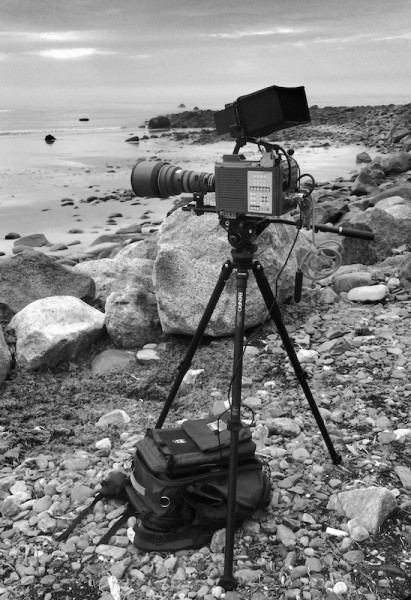
The locations I shot at were all in New Hampshire (Whaleback Light and Portsmouth Harbor Light, both in Portsmouth, and RockStacks in Rye) and Maine (Nubble Light in York, and Portland Head Light, Bug Light and Ram Island Light, all in Portland).
Audio was recorded with the Sound Devices 702 recorder with Rode NTG 2 Shotgun mic and a Shure headset mic.
I edited the film on Final Cut X and used After Effects for a few scenes that had sensor dust. I have been using Final Cut X since it came out and have found it to be quite fast to cut with. I have Adobe CC and Avid but FCPX has been my go-to editor for the past few years. I have not lost any media or projects and the new version has been rock solid for me, to the point I would consider cutting a feature film with it. In the past, I would only use FCPX for short form work like commercials etc.
I am pretty happy with how BEACON turned out, but in hindsight I would have made a few changes. For the aerials I would have liked to use a three axis gimbal as the Phantom was fighting the wind constantly and I think the shots would have been smoother. I should have used an assistant as it was simply too much gear for one person to lug around – it would probably have only needed a couple of days vs five if I had a second pair of hands to help. Even just having someone to watch the gear while I went back to my car to swap equipment would have been a godsend. Next time I will do both of these things but for now I am enjoying this project for what it is.
Special thanks to Heather Sutton, Mike Cohen, Lenny Mordarski, Daniel McCarthy, Chris Beller and Eric Kessler.
You can see more of Michael Sutton’s work on his website or contact him at [email protected]




